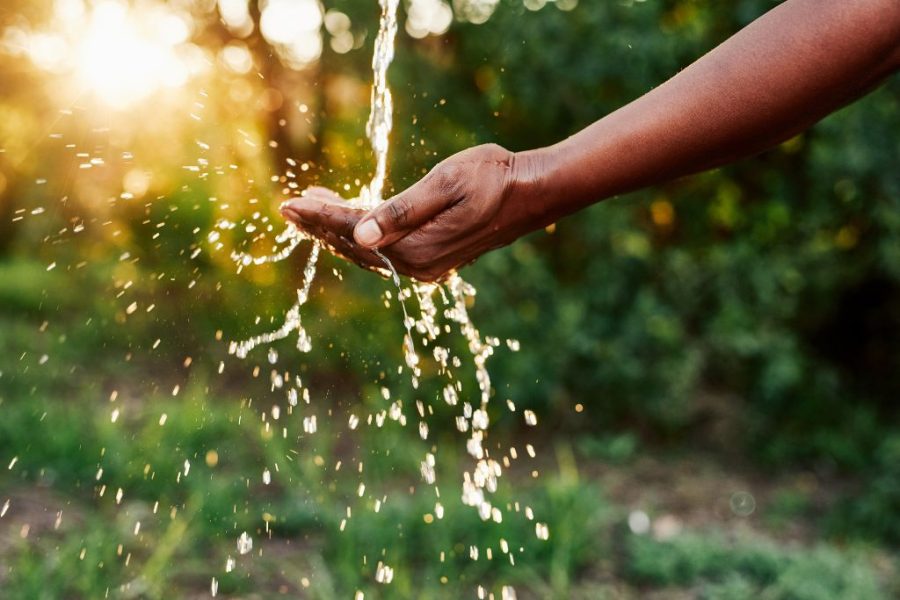
Water Conservation in Landscaping: Tech-Savvy Solutions
Share
As we move towards a more sustainable future, the integration of technology in everyday practices becomes essential. For tech professionals and enthusiasts, the concept of water conservation in landscaping offers a unique intersection between environmental responsibility and innovation. With the increasing scarcity of water resources, it's crucial to explore how technology can aid in conserving water while maintaining beautiful landscapes.
In this article, we'll delve into the various ways technology is revolutionizing water conservation in landscaping. We'll also provide actionable tips and insights to help you implement these strategies in your own garden or landscaping projects.

Understanding the Importance of Water Conservation
Water is a finite resource, and its conservation is critical to sustaining life and the environment. Landscaping, while aesthetically pleasing, can often be water-intensive. According to the Environmental Protection Agency (EPA), outdoor water use accounts for nearly 30% of total household water consumption, with some regions experiencing even higher usage rates.
For tech enthusiasts, the challenge lies in finding innovative solutions to reduce water usage without compromising the beauty and functionality of their landscapes. By harnessing technology, we can make significant strides in conserving water and promoting sustainable landscaping practices.
Smart Irrigation Systems: A Game Changer
One of the most impactful technologies in water conservation for landscaping is the smart irrigation system. These systems utilize sensors, weather forecasts, and data analytics to optimize watering schedules and reduce water waste. By adjusting irrigation based on real-time data, smart systems ensure that plants receive the right amount of water at the right time.
For instance, integrating a drip irrigation system can significantly reduce water usage by delivering water directly to the plant roots, minimizing evaporation and runoff. This precision watering method is not only efficient but also promotes healthier plant growth.
IoT and Water Management
The Internet of Things (IoT) is transforming water management in landscaping by providing real-time data and control over water usage. IoT-enabled devices can monitor soil moisture levels, detect leaks, and even shut off irrigation systems remotely.
Consider investing in a smart leak detection system to prevent water wastage. By identifying leaks early, you can avoid costly water bills and ensure that your landscape remains sustainable. These systems can also alert you to potential issues, allowing for timely maintenance and repairs.
Rainwater Harvesting: Harnessing Natures Gift
Rainwater harvesting is another effective method for conserving water in landscaping. By collecting and storing rainwater, you can reduce reliance on municipal water supplies and decrease your environmental footprint. Tech-savvy solutions such as automated rainwater collection systems can make this process more efficient and user-friendly.
These systems can be integrated with existing irrigation setups, allowing you to use collected rainwater to hydrate your plants. Additionally, rainwater is free of chemicals and salts, making it a healthier option for your landscape.
Native and Drought-Tolerant Plants
Choosing the right plants is crucial for water conservation in landscaping. Native and drought-tolerant plants are adapted to local climates and require less water than non-native species. Incorporating these plants into your landscape design can significantly reduce water usage while maintaining aesthetic appeal.
For tech professionals, consider using garden design software to plan your landscape with water conservation in mind. These tools can help you visualize plant placements, calculate water needs, and optimize your garden layout for maximum efficiency.
Conclusion
Water conservation in landscaping is not just an environmental responsibility but also an opportunity for tech innovation. By embracing smart irrigation systems, IoT devices, rainwater harvesting, and strategic plant selection, tech professionals can create sustainable landscapes that are both beautiful and efficient.
To learn more about sustainable practices, check out this guide on 25 ways to save water.

FAQs
What are the benefits of using smart irrigation systems?
Smart irrigation systems optimize water usage by using sensors and data analytics, reducing waste and promoting healthier plant growth.
How does IoT contribute to water conservation in landscaping?
IoT devices provide real-time monitoring and control over water usage, allowing for efficient management and early leak detection.
Why should I choose native plants for my landscape?
Native plants are adapted to local climates, requiring less water and maintenance, making them ideal for sustainable landscaping.
